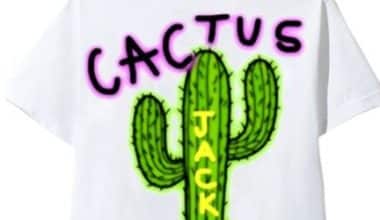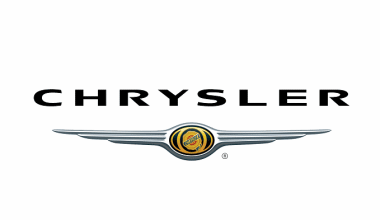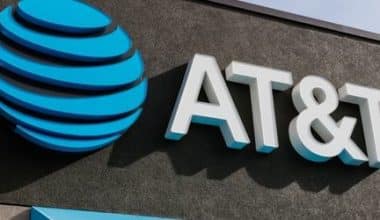The Oakland Raiders are a professional football team that was founded in 1960 in Oakland, California. The team has expanded since then and is currently a founding member of the American Football League. This article talks about the old Oakland Raiders logo and the Las Vegas Raiders logo.
The Historical Logo
To some, the Raiders are better known as the Oakland Raiders, as they were originally known when they were created in 1960. They later relocated to Los Angeles and changed their name to the Los Angeles Raiders. When they relocated to Las Vegas, they changed their name to the Las Vegas Raiders. Although they went through a few name changes, their mascot stayed unchanged throughout the years.
1960-1962: The First Logo
Although close to the design we connect with the squad, the first logo was unique and inventive. It included a pirate, as did the subsequent logo concepts. In the background, there were two crossed sabers with a yellow football vertically above them. The pirate had a personality, with an eye patch over his right eye and a leather black helmet. For the football, the color palette was simply yellow, black, and white. The sabers’ handles were likewise displayed in the same yellow as the football.
A New Beginning: 1963-1964
The team chose to remove the yellow color from the logo three years after the first logo was created. They preserved the mascot from their previous logo, exhibiting the same pirate as in the previous logo in the center of the emblem. The color scheme had been altered to silver-gray and black. The logo now includes a wordmark that displays the team’s name. The logo included a badge, which was black at the top and grey at the bottom. While the words “The Oakland” were displayed in a little arch at the top, the words “Raiders” were displayed below it in bolder and larger fonts. The design appeared cleaner and more serious overall, with the wordmark emphasizing the name.
The Raiders moved from 1982 to 1994.
In 1982, the team thought they were ready for a name change as well as a location change. They relocated to Los Angeles and changed their name to the Los Angeles Raiders. Despite the fact that they relocated and changed their name, they did not alter their logo. Instead, they used the same logo that they had previously used, being consistent while also ensuring that they remained recognized by their supporters. The team’s recognizable black and grey shield with the contemporary pirate remained for another decade. They spent 12 seasons in Los Angeles until the Raiders relocated to Oakland.
Returning to Oakland: 1995 – 2019
In 1995, the team relocated once more, this time back to Oakland. Despite their relocation, the squad did not believe it was necessary to modify the logo that had been with them for decades. Their team’s visual identity was swiftly becoming not only memorable and recognized, but also well-known on a global scale. People all across the world quickly associated the distinctive mark with the team and what they did. The simple black, white, and grey logo was doing admirably for the team.
Today’s Logo: 2020 – Present
The franchise relocated to Las Vegas and changed its name to the Las Vegas Raiders at the end of 2019. They retained the logo virtually exactly the same as previously, with only a few minor alterations. The only noticeable difference was a darker shade of gray on the pirate’s helmet. The Raiders’ crest received a thick white frame in 2020, but it was the only modification. It’s one thing to have a good logo, but it’s quite another to have a logo that has endured many locations and name changes while remaining constant.
Color Scheme
When we consider why the logo works, we must consider the colors. The team chose simple but classic and bright hues that will stand out. The basic color scheme honors the team while ensuring that it may be applied to a range of materials. The color scheme is limited to three hues: light grey, black, and white.
The Font
Although the current design just has one word for the wordmark, it is nevertheless striking and memorable. It employs a powerful sans-serif typeface with all capital characters. This font is easy to read and expresses the team strongly while remaining humble. It’s part of what keeps the logo simple while also giving it personality.
The Significance
Then there’s the symbol, the iconic pirate who has been with the squad since the beginning. This symbol is significant in the team for several reasons, one of which is that it has existed for as long as the team has. It’s unusual to see a logo that has remained virtually unchanged from its inception, but it’s even more unusual to have the mascot remain unchanged. This symbol is unique and represents the team. The pirate has finer detailing while remaining simple overall and contributes to the logo. This symbol is at the heart of the logo and is what makes it the masterpiece that it is today.
Although the AFL was founded on August 14, 1959, the Raiders did not become the league’s eighth member until 1960. They joined as a replacement for the Minneapolis franchise at the time. The team didn’t get off to a good start, and their record in their first few years of play wasn’t promising. The team then hired a new head coach three years after joining the league. Al Davis took over as Radier’s head coach and quickly transformed the team.
The Raiders’ Background
The Las Vegas Raiders are a professional American football team that was formerly known as the Oakland Raiders. It was known as the Oakland Raiders from 1960 to 1981 and then from 1995 to 2019 before shifting to the Las Vegas metropolitan area. From 1982 through 1994, the team was known as the Los Angeles Raiders in the National Football League.
The Oakland Raiders were supposed to be known as the “Oakland Senors” after that name won a name-the-team contest. However, as locals mocked the club, the name was changed to “Oakland Raiders” before the 1960 season began.
Eddie Erdelatz was named the Raiders’ inaugural head coach after having success as a collegiate football coach at the United States Naval Academy in the 1950s. The Oakland Raiders migrated to Oakland around January 1960. They were the eighth team in the newly formed American Football League (AFL) to recruit players and thus had to settle for the last available players.
In 1961
Erdelatz was fired in September 1961 after the Raiders were outscored in their first two games. Marty Feldman, an offensive line coach from Los Angeles, took his place. The club finished the 1961 season with a 2-12 record.
Feldman started the 1962 season but was fired in October 1962 with a 0-5 record. From October until December of that year, former assistant coach and Oklahoma native Red Conkright served as interim head coach. Under Conkright, the team went 1-8, finishing the season with a 1-13 record. After the 1962 season, the Raiders hired Conkright as an interim coach while they looked for a permanent coach.
Al Davis, a former San Diego Chargers assistant coach, was hired as the Raiders’ general manager and head coach. Davis quickly changed the team’s color palette to black and silver and began practicing what he called the “vertical game,” a potent offensive plan inspired by San Diego Chargers head coach Sid Gillman’s attack strategy.
Davis led the Oakland Raiders to a 10-4 record, and he was awarded the AFL’s top coach in 1963. While the team’s record fell to 5-7-2,
In 1964
The following year, it improved to an 8-5-1 record. He also pioneered the use of registered trademarked club slogans such as “Commitment to Excellence,” “Just Win, Baby,” and “Pride and Poise.”
1967 Super Bowl Debut
By 1967, a few seasons before the AFL-NFL merger, the Oakland Raiders had steadily progressed. The Raiders finished the 1967 season with a 13-1 record, led by standout quarterback Daryle Lamonica. The following year, they won the AFL Championship, defeating the Houston Oilers 40-7.
Following the victory, the squad earned a ticket to their first Super Bowl appearance, which they lost in Miami, Florida. The Raiders were defeated in their second Super Bowl participation in January 1968, falling 33-14 to the Green Bay Packers.
The Raiders finished the 1968 season with a 12-2 record and won the AFL West Division title for the second time. They were defeated 27-23 by the New York Jets in the AFL Championship Match.
Base in Los Angeles (1982–1994)
The Raiders agreed to relocate their headquarters to Los Angeles in 1980. However, the move did not take place until 1982, just in time for the start of the 1982 season.
The newly rebranded Los Angeles Raiders finished the strike-shortened 1982 season with an 8-1 record, clinching the AFC West title. However, they were defeated by the New York Jets in the second round of the playoffs. The following season, the Raiders finished 12-4 to retain the AFC West title.
The Raiders easily defeated the Seattle Seahawks and Pittsburgh Steelers in the AFC playoffs before defeating the Washington Redskins 38-9 to claim their third Super Bowl triumph and third NFL crown. The Raiders enjoyed another successful regular season in 1984, finishing 11-5. However, a three-game losing streak earned them a wild-card spot in the playoffs, where they were defeated by the Seattle Seahawks.
In 1985
The Raiders won 12 games and won the division title in 1985, with Marcus Allen voted MVP. Any remaining postseason chances were dashed after the loss to the New England Patriots.
Following that, the Raiders’ fortunes plummeted, as they finished with no better than an 8-8 record from 1986 and 1989, including having back-to-back losing seasons for only the second time. Marcus Allen was also embroiled in a highly publicized feud with Raiders management in 1986. The conflict lasted until the next year when Allen was effectively replaced by Bo Jackson.
Furthermore, Jackson was a left fielder for the MLB’s Kansas City Royals, thus he couldn’t play for the Raiders full-time until the baseball season ended in October. Worse, the NFL lost one game due to another strike, forcing the Raiders to use substitute players.
Prior to the return of regular players following the strike, the squad had a 1-2 record and finished the season with a 5-10 record. As a result, Tom Flores stepped down as head coach and was promoted to management. Mike Shanahan, the Denver Broncos’ offensive vice coach at the time, took his spot.
Shanahan led the Raiders to a 7-9 record in 1988, and Jackson and Allen battled for the starting running back position. There was fan apathy and low game attendance at this stage.
As a result, speculations about the Raiders returning to Oakland began to circulate in July 1988, when a preseason match versus the Houston Oilers was scheduled for Alameda County Coliseum in Oakland.
Return to Oakland Headquarters (1995–2019)
Al Davis, a Raiders co-owner, began the process of relocating the Raiders to their original home in Oakland in June 1995. The Alameda County Coliseum’s directors authorized the move the following month.
The city invested $220 million to restore the outdated Alameda County Coliseum in order to entice the Raiders to return to Oakland. The modifications included the addition of a new 10,000-seat seating section known colloquially as “Mount Davis.”
The city also covered the entire cost of the team’s relocation and constructed a new training facility for them. In exchange, the Raiders agreed to pay a $525,000 annual rent and forego game-day running and maintenance expenditures.
The Raiders opened the 1995 season successfully under new head coach Mike White, and the relocation back home was highly embraced. The Raiders started the season 8-2, but injuries to first-choice quarterback Jeff Hostetler contributed to the team’s six-game losing streak, which resulted in an 8-8 record. As a result, the Raiders missed the playoffs for the second consecutive season.
The Base in Las Vegas (2020–Today)
The Oakland Raiders relocated from Oakland to Las Vegas in January 2020, where they were renamed the Las Vegas Raiders. The Raiders played without fans for the entirety of the 2020 season because of the ongoing COVID-19 Pandemic. They started the season 6-3 but finished with an 8-8 record, missing out on the postseason playoffs for the fourth year in a row.
Las Vegas Raiders Logo
The Las Vegas Raiders logo is an American football team headquartered in Las Vegas. The Raiders play in the American Football Conference (AFC) West division of the National Football League (NFL). The team is headquartered in Henderson, Nevada, and plays its home games at Allegiant Stadium in Paradise, Nevada.
The Raiders were in existence on January 30, 1960, and their first home was in Oakland, California. On September 11, 1960, as charter members of the American Football League, they had to play their first regular season game. (AFL). With the AFL-NFL merger in 1970, they transferred to the NFL.
From 1982 through 1994, the team relocated to Los Angeles before returning to Oakland for the start of the 1995 season. On March 27, 2017, NFL team owners overwhelmingly approved the Raiders’ request to relocate to Las Vegas. On January 22, 2020, the Raiders relocated to Las Vegas, nearly three years later. The inaugural Raiders logo roster featured 28 rookies and 14 veterans. Quarterback and future Raiders coach Tom Flores, as well as future Hall of Fame center Jim Otto, were among the rookies on the Raiders’ roster.
More Information
The Raiders’ on-field success has declined over time significantly. During the team’s first three years (1960–1962), it didn’t do well, had money problems, and had sporadic fans. In 1963, when Al Davis became head coach (and later owner), the Raiders’ luck changed for the better. The Raiders made the playoffs for the first time in 1967, after several years of progress. That year, the Raiders won their first (and only) AFL Championship, advancing them to Super Bowl II, where they lost the victory to the Green Bay Packers. Since 1963, the team has won 15 division titles (3 AFL and 12 NFL), four AFC championships, one AFL championship, and three Super Bowl triumphs.
From 1972 until his death in 2011, Al Davis was the team’s owner. Mark Davis, Al’s son, now runs the business, but Al’s wife, Carol, still owns it. The Raiders have a large fan base and a distinct team culture. The Raiders have 17 former players, two former coaches, and Al Davis who have been inducted into the Pro Football Hall of Fame. They used to play at Kezar Stadium and Candlestick Park in San Francisco, Frank Youell Field and the Oakland Coliseum in Oakland, and the Los Angeles Memorial Coliseum in Los Angeles.
Oakland Raiders Logo
The Oakland Raiders were going to be called the “Oakland Seors” after winning a name-the-team contest, but after becoming the target of local jokes, the name was altered to the Raiders before the 1960 season began. Eddie Erdelatz, a San Francisco native, was chosen as the Raiders’ first head coach after a successful collegiate coaching career as an assistant coach at Navy in the 1950s. Erdelatz accepted the Raiders’ head coaching position on February 9, 1960, after turning down offers from the NFL’s Washington Redskins and the AFL’s Los Angeles Chargers. Because of NFL intervention with the original eighth franchise owner, the Raiders were the final club of eight in the fledgling American Football League to pick players in January 1960.
The Raiders’ 42-man roster in 1960 had 28 rookies and only 14 veterans. Future Pro Football Hall of Fame inductee center Jim Otto and future Raiders head coach Tom Flores were among the Raiders rookies. The Raiders finished 6-8 in their first season under Erdelatz.
In 1961
Erdelatz was fired on September 18, 1961, after the Raiders were outscored 77-46 in the first two games of the season. Following Erdelatz’s firing, management named Los Angeles native and offensive line coach Marty Feldman as Raiders head coach on September 24, 1961. The 1961 season ended with a 2-12 record for the squad.
Feldman took over as Raiders head coach for the 1962 season but was sacked on October 16, 1962, following a 0-5 start. Red Conkright, an Oklahoma native, and former assistant coach coached the Raiders from October 16 to December. The Raiders went 1-8 under Conkright, concluding the season with a 1-13 record. Following the 1962 season, the Raiders hired Conkright as an interim coach while they searched for a new head coach.
Following the 1962 season, Raiders general partner F. Al Davis was hired as Raiders’ head coach and general manager by Wayne Valley. He was the youngest individual in professional football history to hold the position at the age of 33. Davis immediately implemented what he called the “vertical game,” an aggressive offensive style influenced by Chargers head coach Sid Gillman’s offense. On September 7, 1963, the renowned silver and black Raider uniform made its debut in the regular season opener. Previously, the team wore black and white with a gold accent on the pants and huge numerals.
In 1966
Davis left the Raiders in April 1966 after being named AFL Commissioner, promoting assistant coach John Rauch to head coach. Until 1970, the leagues would have had separate regular seasons. With the merger, the role of the commissioner was no longer required, and Al Davis began talks with Valley about rejoining the Raiders.
Davis returned to the organization as a part-owner on July 25, 1966. He became the team’s third general partner after purchasing a 10% stake in the team for $18,000 (equal to $150,332 in 2021). He also took over as head of football operations. The Raiders repeated their 8-5-1 record from 1965 in 1966, but missed the playoffs, finishing second in the AFL West Division.
Old Raiders Logo
The Oakland Raiders were a professional rugby team based in Oakland, California, from 1960 to 1981 and then again from 1995 until they moved to Las Vegas. However, the Oakland Raiders logo Tribune held a “name the team” contest when the team was created in 1960.
The Oakland Seors were the winning team. After a few days of being the brunt of local jokes (and accusations that the contest was rigged, as Chet Soda was well known in the Oakland business community for calling his acquaintances “seor”), the fledgling team (and its owners) changed the team’s name logo to the Oakland Raiders, which had finished third in the naming contest, nine days later.
The team’s initial colors were black, gold, and white. The now-famous team logo of a pirate (or “raider”) wearing a football helmet was designed, allegedly based on actor Randolph Scott. The original Raiders’ outfits were black and gold, with a white stripe and no logo, and the helmets were black with a white stripe and no logo. From 1960 to 1962, the team wore this look. When Al Davis took over as head coach and general manager in 1963, he switched the team’s colors to silver and black and added a logo to the helmet.
The club finished the season with a 6-8 record under Erdelatz’s leadership. They’ve amassed a sizable fan base and are feared by their opponents on the field. The squad has always looked to one mascot for inspiration, the mascot shown on the emblem, which has only undergone a few alterations during the years that it has represented the team.
Why Is the Raiders Logo a Pirate?
The team’s famous logo features a raider, or pirate, wearing a football helmet and holding two cutlasses crossed behind him. The raider’s head was purportedly modeled after the face of American film actor Randolph Scott.
Who Is the Raiders Logo Based On?
The face is based on actor Randolph Scott, who has a patch over his right eye. Davis modified the helmet’s color from black to silver, and it now sits on two crossed swords. The background of the shield was altered from silver to black, and just the team word “Raiders” was placed above the head.
What Is the Raiders Mascot Supposed to Be?
The Las Vegas Raiders logo is a portrait of a pirate (Raider) wearing a football helmet with two crossed swords behind him. According to reports, the Raider’s image was influenced by the face of American movie star Randolph Scott.
Are the Raiders Getting a New Logo?
To mark their 60th season, the Oakland Raiders released a new logo. The design will pay homage to the team’s heritage, from the foundation of the AFL franchise by legendary Raiders owner Al Davis to the club’s three Super Bowl victories and history in Oakland and Los Angeles.
What Does the Oakland Raiders Logo Represent?
The name of the Oakland Raiders Football Club, which will be known as the Las Vegas Raiders beginning in 2020, is represented by the team’s logo. This is a picture of a pirate who wears a blindfold and a helmet. He is represented against the backdrop of two crossed sabers that are contained within a heraldic shield in the shape of a triangle.
Who Is the Guy on the Raiders Logo?
The American film actor Randolph Scott served as the inspiration for the figure that appears in the Oakland Raiders’ team emblem. His likeness was chosen to represent the club’s mascot, the legendary raider pirate, which has been in use since the early 1960s.
Will the Raiders Change Their Logo?
The primary component of the Oakland Raiders logo has remained unchanged since the year 1960. The surrounds, color palette, and shape of the background have all been altered multiple times, yet there has been no significant shift in either of these aspects. Furthermore, the club has no plans to alter its recognizable badge, which features the silhouette of a raiding pirate.
What Is the Concept of the New Raiders Logo?
The emblematic representation of the Las Vegas Raiders consists of a portrait of a buccaneer (the Raider) wearing a football helmet and being accompanied by two crossed swords in the background. It has been said that the visage of American film actor Randolph Scott served as the inspiration for The Raider’s picture.
Why Do So Many Gangsters Like the Raiders?
The first factor contributing to this is their involvement in the gang culture. The name NWA and the beginnings of gangsta rap will be inextricably linked to the Raiders’ logo forever. Gangs, violence, and criminal activity are all connected with gangsta rap, which was pioneered by artists like Ice Cube, Dr. Dre, and Eazy-E. If you hadn’t guessed already, gangsta rap is associated with these things.
Related Articles
- Casino Business Plan Model (+Free Samples & Templates)
- Casino Marketing: Unique Strategies & Ideas that Work
- FINANCIAL COACH: How to Become a Financial Coach
- ONLINE BUSINESS COACH: What It Is and How to Become One
- 20 Top Digital Marketing Agencies(Updated!)






